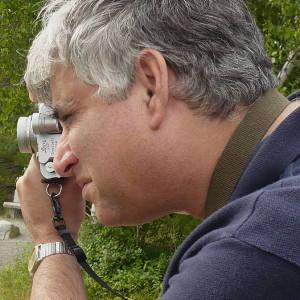The Tale of a Portrait. Leitz Summicron 50mm DR
This morning, as I was preparing breakfast in the kitchen, I glanced across the room and noticed how the various scores on my music desk had lined themselves up. On the cover of an old Dover edition of the violin partite and sonatas, is a famous portrait of their even more famous composer, Johann Sebastian Bach. The story of this portrait, and how it has survived to the present day is one of only a handful of feel-good tales that I can recall in our recent times seemingly beset by horror.
Bach, toward the end of his life applied for membership of a Society of Musical Sciences in Leipzig, one of the requirements for admission being a portrait of the applicant. Bach commissioned his from Elias Gottlob Haussmann, a local painter. There were two copies, the original from 1746, which, although it survives, was ruined by 19th century restoration attempts, and this copy - the one in my Blip - from 1748, which is almost perfectly intact. Upon his death in 1750, Bach bequeathed the 1748 portrait to his son, Carl Philipp Emanuel. It stayed in the family until about 1790 at which point it was lost until the early 19th century when it showed up at a market in Breslau - now Wroclaw in Poland. The painting was bought by a Jewish family, Jenke, in whose possession it stayed for about 150 years. A descendant of the family, Walter, sensing the coming catastrophe of the Holocaust, fled to Britain in 1936, taking the Haussmann portrait with him. When war broke out, Walter sought out an old friend from pre-war days, Rolf Gardiner, - they had spent time together in youth camps in Germany - and asked Gardiner, who lived on a farm in Dorset to keep the portrait safe, away from the German bombing. Rolf Gardiner's son, John Elliott Gardiner, now regarded as one of the world's pre-eminent Bach scholars and conductors, grew up with that stern countenance looking down on him from the wall of the farmhouse. In 1952, Walter Jenke asked his friend to return the portrait so that he could auction it to pay for his sons' educations. It was bought by American philanthropist, William H Scheide, - his family made a fortune in the oil business -, who became something of a Bach scholar himself, devoting his life - and money - to many worthy political and artistic causes as well as collecting rare art, music and literature. Upon his death at age 100, Scheide bequeathed the Bach portrait, which had frowned down on his desk for 60 years, to the Leipzig Bach Archive. It was returned to Germany in June 2015 during a deeply moving ceremony at the annual Bach Festival in Leipzig. "Old Bach" - as Frederick the Great referred to him - is back where he belongs. I will mention in passing, that this year, 2023, is the 300th anniversary of Bach's appointment as the Cantor of the Thomaskirche. Dare I say, the organizers have pulled out all the stops to mark the occasion...?
How often does it happen in this world that people act without self-interest for the betterment of society? I believe Scheide's donation of a painting, worth $2.5million in the currency of earthlings, but priceless in its contribution to art and history, is such an act. Haussmann's portrait of Johann Sebastian Bach is the only authenticated glimpse we have of this man who, towering above all his contemporaries, set the course of the Western musical tradition for 150 years, and gave the world some of the most beautiful music ever composed.
I have gleaned the information above from many different sources, but will offer a link to an article in The Guardian.

Comments
Sign in or get an account to comment.


